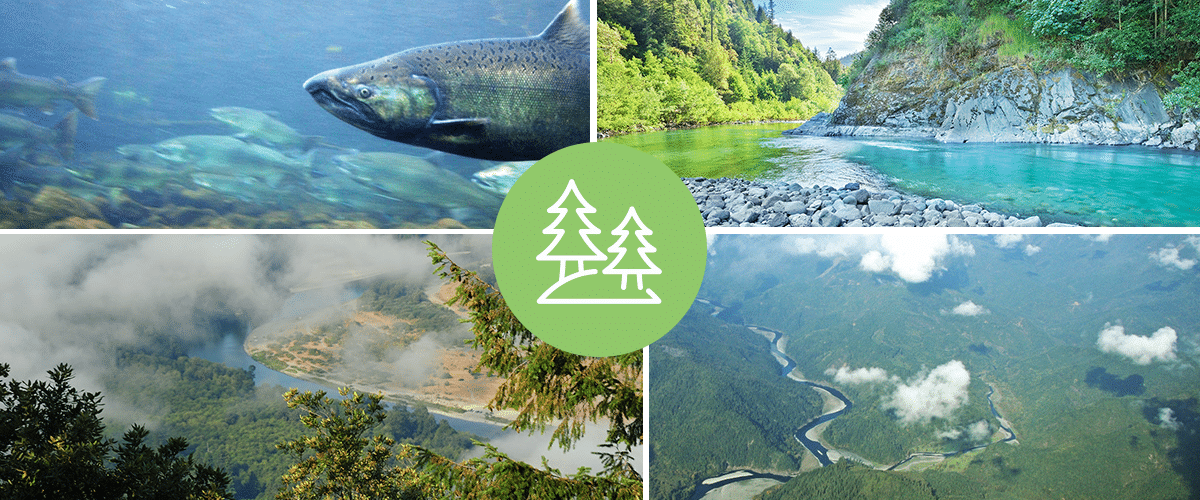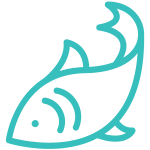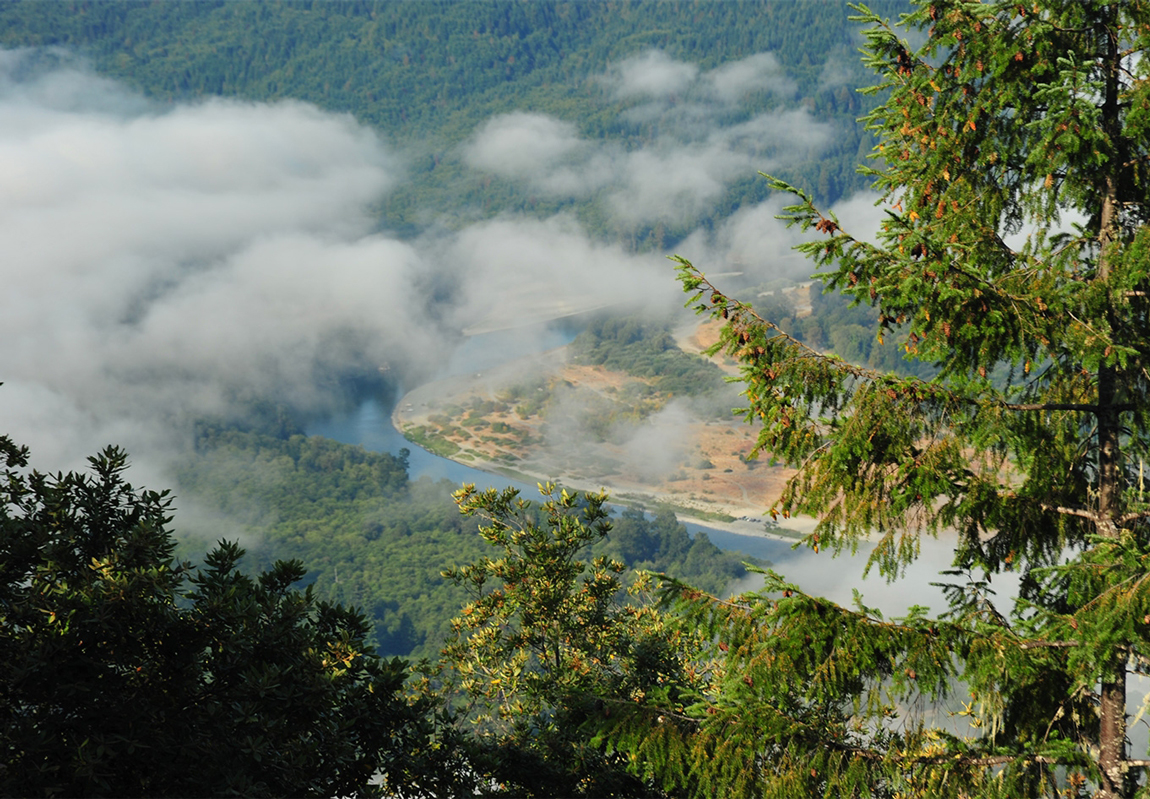
|
Western Rivers Conservancy (WRC), an Oregon-based non-profit conservation organization, has purchased 47,097-acres along Blue Creek in Northern California and is working to use carbon finance to transfer the forested property back to the Yurok Tribe. Today, 14,790 acres are conserved as a “salmon sanctuary” with protection from harvesting. The other 32,307 acres are managed as a tribal “community forest” with limited sustainable harvesting. WRC has also placed a carbon project on nearly 15,000-acres of the property. As the project area recovers from industrial management, the California Air Resources Board Forestry Protocol will credit the project exclusively for new carbon growth, meaning all the carbon credits generated can be considered carbon removals. Saving Blue Creek, Lifeline of the Klamath River from Western Rivers Conservancy on Vimeo. |

Western Rivers Conservancy (WRC), an Oregon-based non-profit conservation organization, has purchased 47,097-acres along Blue Creek in Northern California and is working to use carbon finance to transfer the forested property back to the Yurok Tribe. Today, 14,790 acres are conserved as a “salmon sanctuary” with protection from harvesting. The other 32,307 acres are managed as a tribal “community forest” with limited sustainable harvesting. WRC has also placed a carbon project on nearly 15,000-acres of the property. As the project area recovers from industrial management, the California Air Resources Board Forestry Protocol will credit the project exclusively for new carbon growth, meaning all the carbon credits generated can be considered carbon removals. Saving Blue Creek, Lifeline of the Klamath River from Western Rivers Conservancy on Vimeo. |
CO-BENEFITS
Environmental:
Habitat preservation
The project protects Blue Creek, where the riparian and upland areas provide outstanding habitat for rare and imperiled animals like marbled murrelet, northern spotted owl, California condor, and Humboldt marten. Blue Creek also acts as a cold-water lifeline for salmon in the Klamath watershed. The Klamath was once the third largest producer of salmon on the West Coast, but faces many significant threats today. Salmon and steelhead are impacted by high water temperatures resulting from low summer flows. For returning fish on their journey inland from the Pacific Ocean, Blue Creek is the first cold-water refuge they encounter and this project ensures its long-term protection. Blue Creek’s cold water allows salmon and steelhead to lower their body temperature by as much as eight degrees, making this tributary critical to their survival.
Social:
Repatriation of indigenous lands
WRC is using carbon revenue to pay for the purchase of the property, implement restoration work and ultimately transfer the land back to the Yurok Tribe. Carbon and sustainable timber revenue generated by the property will support the Yurok Tribe over the long-term. Currently, 80% of the tribe lives below the poverty line. Conserving this property will help spur an economic revitalization by offering new sustainable management job opportunities in an economically depressed area. Carbon finance enables the return of ancestral lands to the Yurok, who–before this project–only retained five percent of the original reservation promised to the tribe in 1855.
To learn more about the Western Rivers Blue Creek project and how your organization can support this initiative and address its GHG emissions with verified emissions reductions, Get in Touch.
SDG Impacts:
![]()
- SDG 1 – End poverty in all its forms everywhere.
- SDG 6 – Ensure availability and sustainable management of water and sanitation for all.
- SDG 8 – Promote sustained, inclusive and sustainable economic growth, full and productive employment and decent work for all.
- SDG 13 – Take urgent action to combat climate change and its impacts.
- SDG 14 – Conserve and sustainably use the oceans, seas and marine resources for sustainable development.
- SDG 15 – Promote, restore and promote sustainable use of terrestrial ecosystems, sustainably manage forests, combat desertification, and halt and reverse land degradation and halt biodiversity loss.
- SDG 16 – Promote peaceful and inclusive societies for sustainable development, provide access to justice for all and build effective, accountable and inclusive institutions at all levels.



